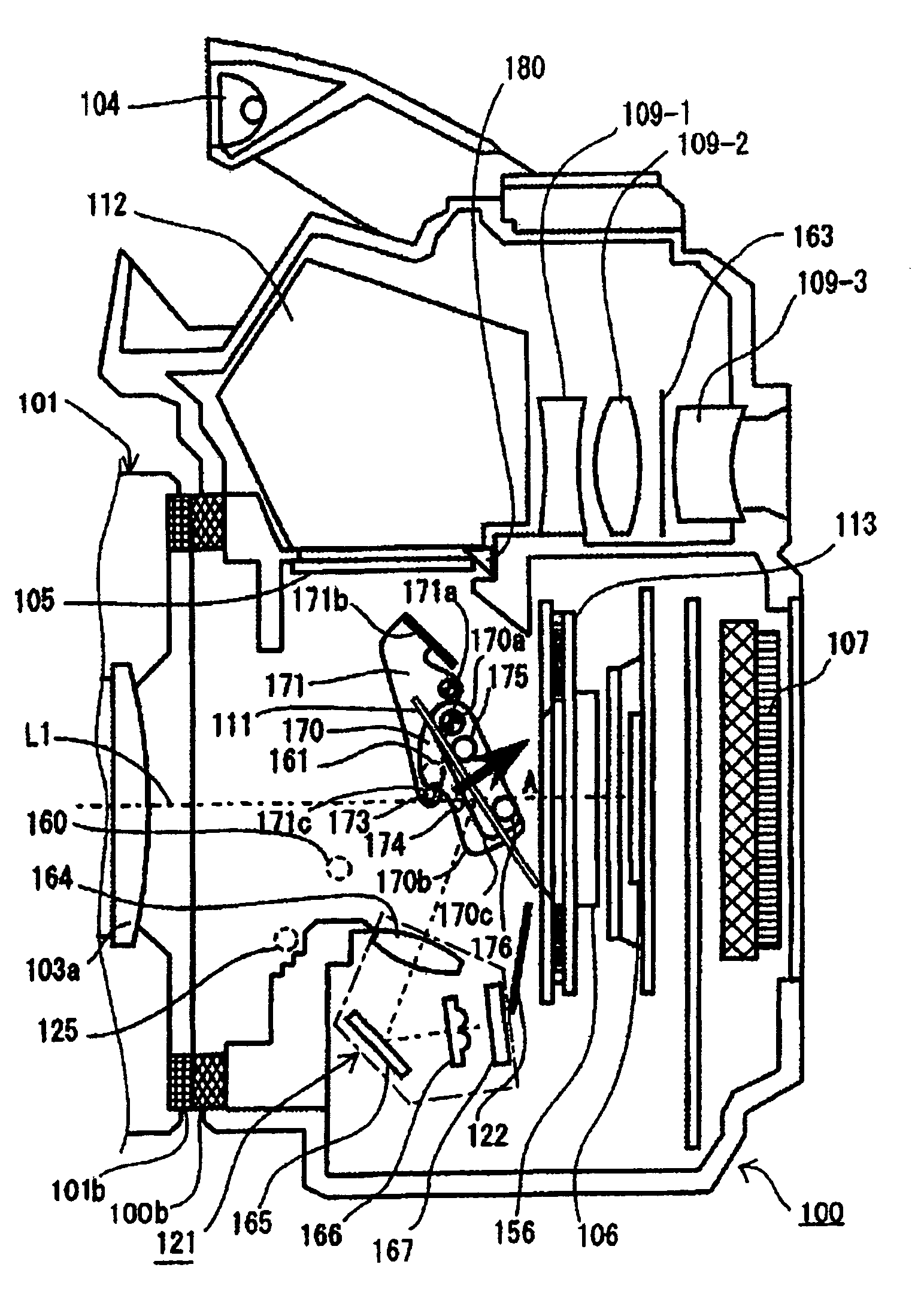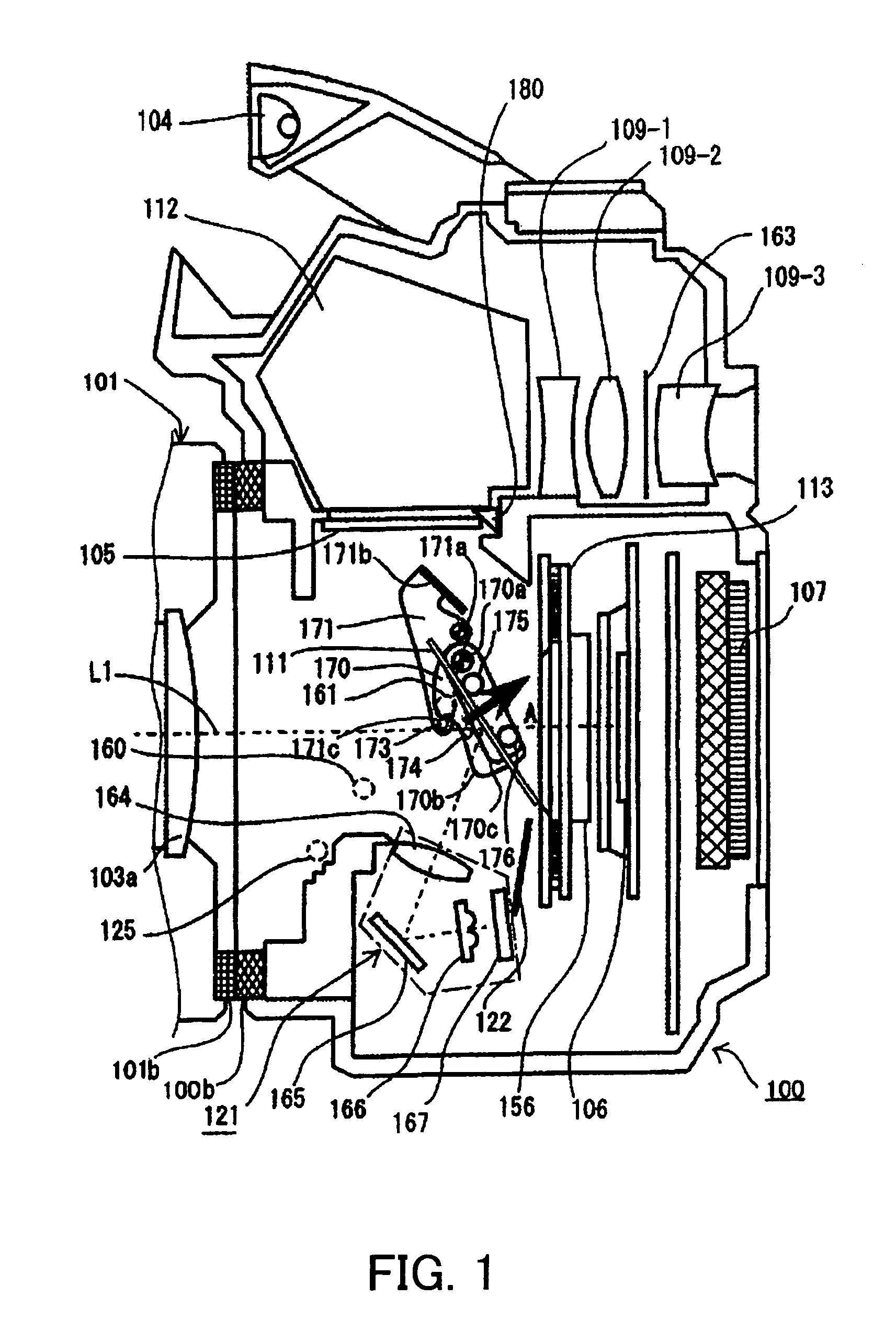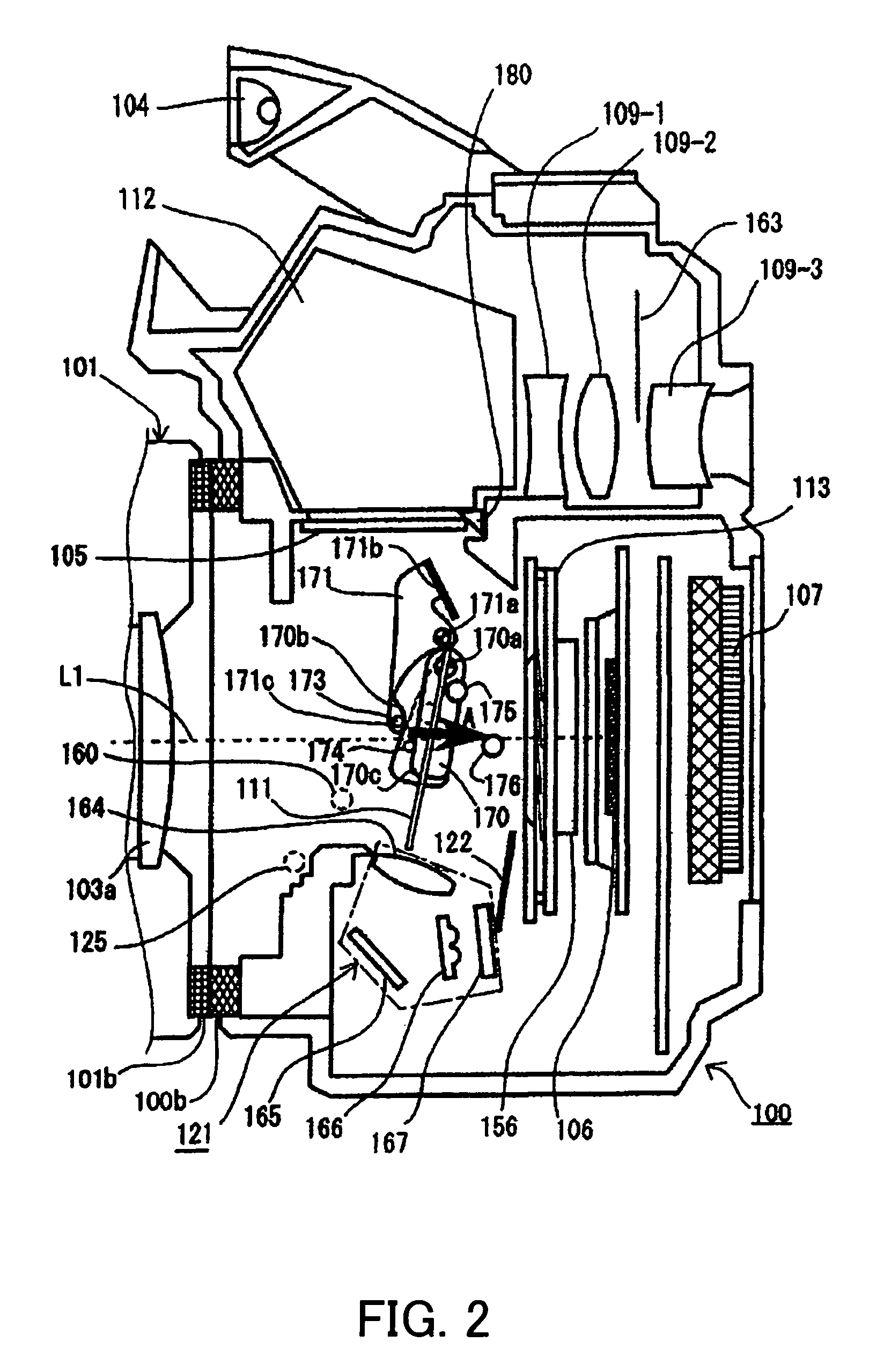Image-taking apparatus and system
a technology of image-taking apparatus and system, which is applied in the field of image-taking apparatus, can solve the problems of reducing the imaging light intensity of the camera body, requiring a long time to determine focus, and reducing the cost of the lens unit, so as to eliminate the disadvantage
- Summary
- Abstract
- Description
- Claims
- Application Information
AI Technical Summary
Benefits of technology
Problems solved by technology
Method used
Image
Examples
Embodiment Construction
[0031]Referring now to the accompanying drawings, a description will be given of the preferred embodiment.
[0032]FIGS. 1 to 7 show a camera (or shooting) system according to one embodiment of the present invention. FIG. 6 shows a schematic optical structure of the camera system of this embodiment. This camera system includes a camera body (or an image-taking apparatus) and a lens unit that is detachably attached to the camera body.
[0033]The camera is a one-CCD digital color camera that uses an image-pickup device, such as a CCD and a CMOS sensor, drives the image-pickup device continuously or for each shot, and obtains an image signal indicative of a motion or still image. The image-pickup device is an area sensor that converts the exposure light into an electric signal for each pixel, and stores and reads electric charges corresponding to the received light intensity.
[0034]In FIG. 6, 100 denotes a camera body, and 101 denotes a lens unit that is detachable from the camera body 100. ...
PUM
 Login to View More
Login to View More Abstract
Description
Claims
Application Information
 Login to View More
Login to View More - R&D
- Intellectual Property
- Life Sciences
- Materials
- Tech Scout
- Unparalleled Data Quality
- Higher Quality Content
- 60% Fewer Hallucinations
Browse by: Latest US Patents, China's latest patents, Technical Efficacy Thesaurus, Application Domain, Technology Topic, Popular Technical Reports.
© 2025 PatSnap. All rights reserved.Legal|Privacy policy|Modern Slavery Act Transparency Statement|Sitemap|About US| Contact US: help@patsnap.com



